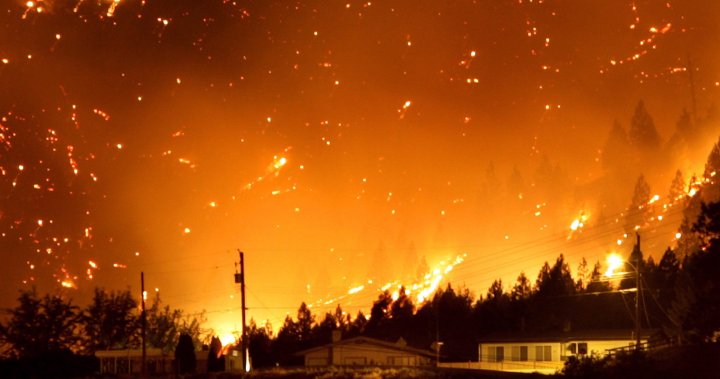With Canada’s wildfire season underway, firefighters are hoping that the weather will aid them in their efforts. However, some provinces are looking to expand upon their firefighting strategies by incorporating nighttime operations. This approach, which has been common in countries like Australia and the United States, is still rare in Canada due to the logistical challenges it presents. The BC Wildfire Service has stated that they are utilizing night operations when necessary, and Alberta has also been using nighttime firefighting with the help of B.C.-based aviation company Talon Helicopters. By implementing new tactics and strategies, including having firefighters prepared and positioned earlier for wildfire response, provinces are able to fight fires during the night when wildfire behavior is typically more subdued.
Jarrett Lunn, chief pilot at Talon Helicopters, highlighted the benefits of nighttime firefighting, such as lower temperatures, higher humidities, and lower winds, which can aid in suppressing fires more effectively. Additionally, being able to attack a fire immediately when it starts can save precious time and prevent overnight spread. Despite its efficacy, nighttime firefighting is uncommon in Canada, with only a few helicopters operating during the night compared to the hundreds of helicopters fighting wildfires during the day. Lunn explained that challenges include the need to modify helicopters for night-vision-goggles compatibility, which can be both logistically and financially difficult. Provinces would also need to set up nighttime operations, which include nighttime aircraft dispatchers, air crew, and access to fuel at night.
One of the main reasons nighttime firefighting is deployed sparingly is due to pilot safety concerns. The BC Wildfire Service stated that nighttime firefighting introduces additional safety considerations to an already dangerous job. Night operations are considered when the safety of fire line personnel will not be compromised and when necessary to meet the objectives outlined in the fire-response plan for that incident. In light of these challenges, the federal government is exploring the possibility of using drones to fight wildfires at night. Emergency Preparedness Minister Harjit Sajjan mentioned a company researching the use of drones to fight wildfires using swarming technology, potentially allowing for firefighting operations at night.
The wildfire season in Canada began early this year after the warmest winter on record, with firefighters in B.C. and Alberta working diligently to tackle wildfires. The Northern Rockies Regional Municipality confirmed that the Parker Lake wildfire in Fort Nelson, B.C., has destroyed four homes and impacted 10 other properties. In northeastern Alberta, a wildfire near Fort McMurray is classified as “being held,” with Alberta Wildfire reporting that the fire did not grow on Sunday and was 19,451 hectares in size. As wildfires continue to pose a threat, the use of innovative strategies, such as nighttime firefighting and potentially drone technology, may play a crucial role in combating these natural disasters and protecting communities and ecosystems.


